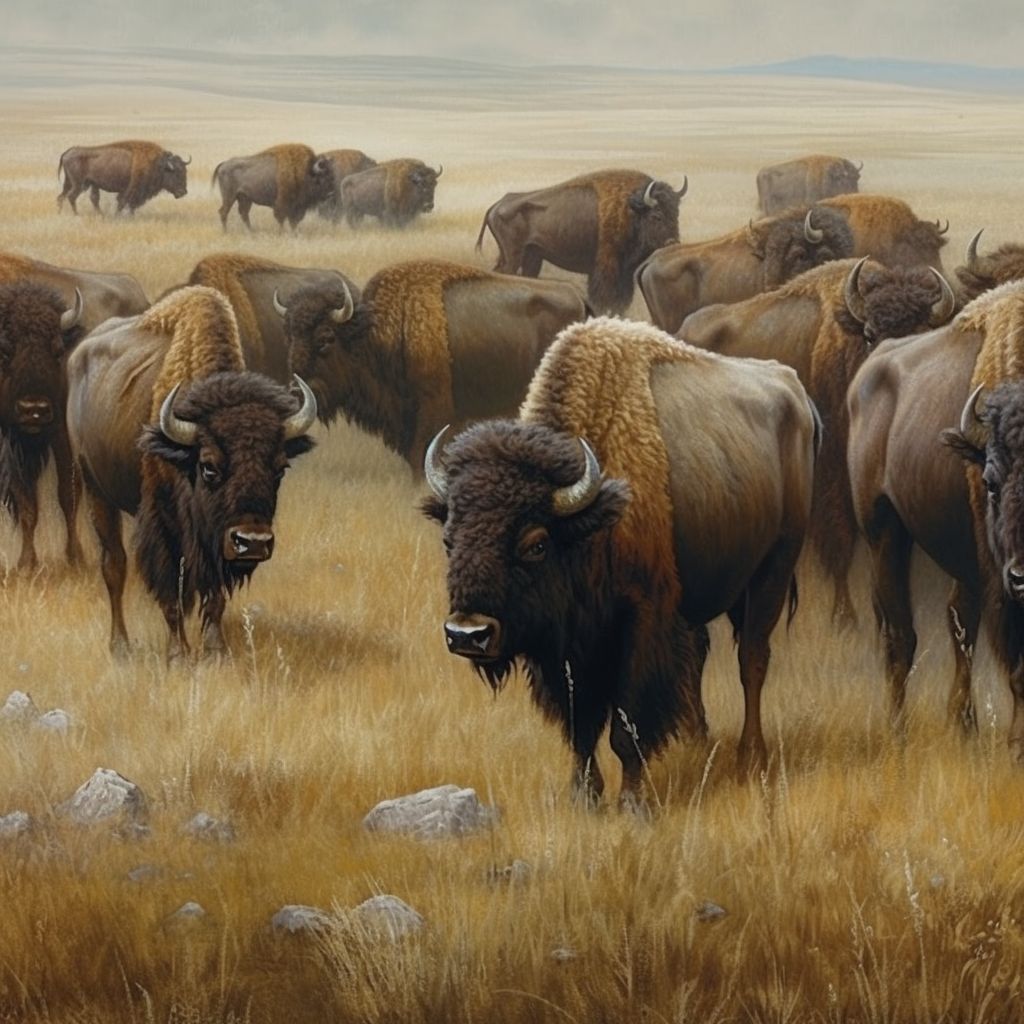Buffalo
Buffalo, also known as American Bison, are large mammals native to North America. They once roamed in vast herds across the continent, from the eastern seaboard to the Rocky Mountains and from the Great Plains to the Gulf of Mexico. In the 19th century, their numbers dramatically declined due to overhunting, habitat loss, and competition with domestic cattle. However, buffalo still hold significant cultural, economic, and ecological importance, particularly for the Native American tribes who have relied on them for centuries.
Physical Characteristics
Buffalo are easily recognized by their massive size, with adult males weighing up to 2,000 pounds and females up to 1,000 pounds. They have a distinctive hump over their shoulders and a thick, shaggy coat that is well-suited for the harsh winters of the Great Plains. Buffalo are known for their impressive agility and speed, with the ability to run up to 35 miles per hour.
Ecology and Habitat
Buffalo are primarily grazers, consuming a variety of grasses and sedges. They are well-adapted to the diverse ecosystems of the Great Plains, from prairie grasslands to riparian areas and woodland edges. Buffalo are a keystone species, meaning that their presence has a significant impact on the ecosystem. Their grazing habits help maintain the health of the grasslands by promoting plant diversity and preventing the encroachment of woody vegetation.
Cultural and Economic Importance
For many Native American tribes, buffalo have been a critical resource, providing food, clothing, shelter, and tools. The relationship between the tribes and the buffalo is one of mutual respect and reverence, with many tribes having traditional ceremonies and rituals centered around the buffalo. The decline of buffalo populations in the 19th century had a profound impact on the lives of Native Americans, contributing to widespread poverty, social disruption, and cultural loss.
Hunting Buffalo with Auto Sapients
The introduction of Auto Sapient steelies has brought new opportunities for more effective buffalo hunting. These advanced automatons, designed to resemble humans or animals, can assist hunters and tribes in several ways. For example, auto sapients with enhanced strength and agility can help drive buffalo towards the hunters, while those with advanced sensory capabilities can track the herds over long distances.
Additionally, auto sapients can be programmed to follow specific hunting strategies, ensuring that buffalo are hunted sustainably and with minimal waste. This can help to maintain the health of the buffalo population and preserve this vital resource for future generations.
Conservation Efforts
In response to the dramatic decline in buffalo numbers, efforts have been made to protect the remaining herds and promote their recovery. The establishment of protected areas, such as Yellowstone National Park, has provided crucial habitat for buffalo, allowing them to roam freely and breed without the threat of hunting. Some Native American tribes have also taken steps to reintroduce buffalo to their ancestral lands, recognizing the importance of the buffalo to their culture and the health of the ecosystem.
Conclusion
Buffalo are an iconic species of North America, with a rich history and deep cultural significance. While their populations have faced significant challenges in the 19th century, efforts to conserve and restore buffalo populations offer hope for the future of this magnificent animal. The use of auto sapients in hunting has the potential to promote sustainable and responsible buffalo hunting practices, ensuring that this vital resource can continue to support the lives and traditions of Native American tribes for generations to come.

